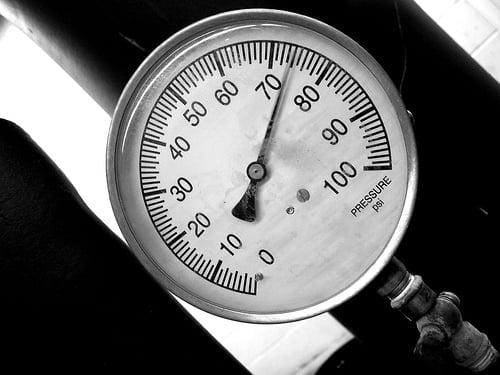 For what seems like millennia (ok, maybe not millennia), there has been confusion surrounding accuracy and resolution. Often the two terms are used interchangeably, especially when referring to measurements and instrumentation.
For what seems like millennia (ok, maybe not millennia), there has been confusion surrounding accuracy and resolution. Often the two terms are used interchangeably, especially when referring to measurements and instrumentation.
But accuracy and resolution are completely different in meaning, so our use of them ought to reflect that difference. Let’s look at some basic examples and see if we can’t tease out the distinction.
Resolution is often associated with monitors and digital images. This is because resolution is actually a measure used to describe the sharpness and clarity of an image on a monitor or a photo. Essentially, resolution expresses the number of the smallest equal pieces used for a display.
A simple example that we’re all familiar with is an analog clock. The resolution of a clock depends on both the number of hands and the number of demarcations on its face. A clock with 60 demarcations and three hands (hours, minutes, and seconds, unless your clock was made by Dr. Seuss) has a resolution of 1 second; however, a clock with 60 demarcations but just two hands has a resolution of 1 minute. By extension, a clock with 60 demarcations and only one hand has a resolution of 12 minutes. You can only know the reading (which is time, for the clock) based on the smallest unit of display.
Using an industrial application example, a digital pressure gauge with a display range of 50.00 psi has a resolution of 0.01 psi (i.e., two decimal places). That’s 1 count out of 5000 equal parts (or 5000 digital counts, but that is a blog for another day). A digital gauge with a display up to 60.00 psi has the same 0.01 psi resolution, but 6000 digital counts instead of 5000.
This is where confusion creeps in: just because a digital gauge displays its readings in 0.01 increments does not mean that the gauge is accurate to 0.01 psi. The same logic applies also to the clock: the clock might show the time down to seconds, but that does not mean it is showing the correct time. To account for the correctness of the measurement, we turn to accuracy.
Accuracy expresses how close a measurement is to the true value being measured. A clock is only accurate if it is set with the correct time and is manufactured to keep time. A clock can have a resolution of one second (three hands, 60 demarcations), but if it is set seven minutes too slow, or it adds a tenth of second to every minute, the lack of accuracy renders the fine resolution moot.
For a digital pressure gauge, accuracy is expressed in relation to the full scale of the gauge. Thus, when calibrated to 0.1% of full scale, our example 50.00 psi gauge has an accuracy of ±0.05 psi. So the gauge has a resolution of 0.01 psi, but an accuracy of ±0.05 psi. The 60.00 psi display has the same 0.01 psi resolution, but an accuracy of 0.1% of full scale equates to ±0.06 psi.
By now you’ve probably caught on to the roles that sensors and displays play in determining accuracy and resolution. Neither an accurate sensor and a display with poor resolution nor an inaccurate sensor and a display with very fine resolution are good pairs. In each case, the weakness of one negates the strength of the other. To be of any value, the accuracy of the sensor must be paired appropriately with the resolution of a display.
Knowing the difference between resolution and accuracy is important when comparing sensors and displays. Understanding how they work together will help you choose a pairing that makes the most sense for your measurement needs. We at APG are here to help you choose a pairing that will make the most sense for any project you are working on.
Have questions about resolution and accuracy, or anything else related to your sensors, gauges and displays? Our Measurement Experts would love to help you find the answers. Give them a call, drop them an email, or chat with them here.
top photo credit: flattop341 via flickr cc